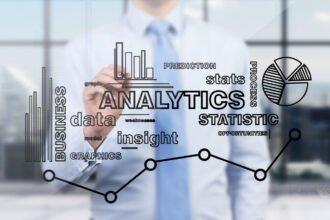I suspect only a small number of those reading this will recognize the phrase in this blog’s title, “This is where we came in.” What does it refer to? What does it have to do with enterprise performance management?
If you are old enough, you will recall this phrase when you went to the movies in the 1950s. That was when during the double-feature era before 1960, movie theatres did not list show times in newspapers. If they did, few paid attention to them. You just showed up and entered the dark theatre while one of the movies was playing. You would wait a few seconds for your eyes to adjust to the dark and then shuffle to empty seats. A few hours later came that memorable moment when you or one of your companions would nudge the others and say, “This is where we came in.” Then you’d shuffle out.
This was common. You were not the only ones. It was an ingrained habit to arrive at any old time. Others who came in at some other time did the same thing. People were continuously entering and leaving the theatre. How could we understand the movie’s plot while…
I suspect only a small number of those reading this will recognize the phrase in this blog’s title, “This is where we came in.” What does it refer to? What does it have to do with enterprise performance management?
If you are old enough, you will recall this phrase when you went to the movies in the 1950s. That was when during the double-feature era before 1960, movie theatres did not list show times in newspapers. If they did, few paid attention to them. You just showed up and entered the dark theatre while one of the movies was playing. You would wait a few seconds for your eyes to adjust to the dark and then shuffle to empty seats. A few hours later came that memorable moment when you or one of your companions would nudge the others and say, “This is where we came in.” Then you’d shuffle out.
This was common. You were not the only ones. It was an ingrained habit to arrive at any old time. Others who came in at some other time did the same thing. People were continuously entering and leaving the theatre. How could we understand the movie’s plot while watching it beginning at some scene in the middle on to the end, and then from the beginning to the middle? It now seems crazy but our brains seemed to do mental splicing that did not require much effort. But we really lost something in the experience. When you saw the ending prior to the beginning, you did not gain from the introductory set up of the plot and the characters.
This weirdness, to us now, stopped when the movie Psycho, directed by the famous director Alfred Hitchcock, was released. Hitchcock demanded movie theatre owners not let people enter the theatre until the movie was over. Hitchcock did not want people to see this thriller’s ending after movie’s psychological setup. Theatre owners protested, fearing lost ticket sales. But Hitchcock’s demands prevailed, and as is often said, the rest is history.
What is the parallel to enterprise performance management solutions, like strategy maps, scorecards/dashboards, activity based costing, driver-based budgeting and so on? The parallel is organizations routinely start in the middle! They purchase commercial software and then try to figure out how to implement it.
Make no mistake. Commercial software is essential to successfully realizing the benefits of each performance management solution. It is even more critical to integrate the solutions – the heart of realizing the full vision of enterprise performance management. (As full disclosure, my employer SAS sells integrated performance management software.) Performance management software is even more powerful when each methodology is imbedded with analytics of all flavors. The message here is that it is preferable initiate implementing these solutions by first having a strategy and plan for its application combined with motivational inspiration from the executive team and a behavioral change management readiness-for-change program.
Although many organizations do start with purchasing the software and then do the mental splicing, as we once did in the movie theatres, it just works better when you do the setup to achieve the fullest impact. This is how Alfred Hitchcock would have advised us.







